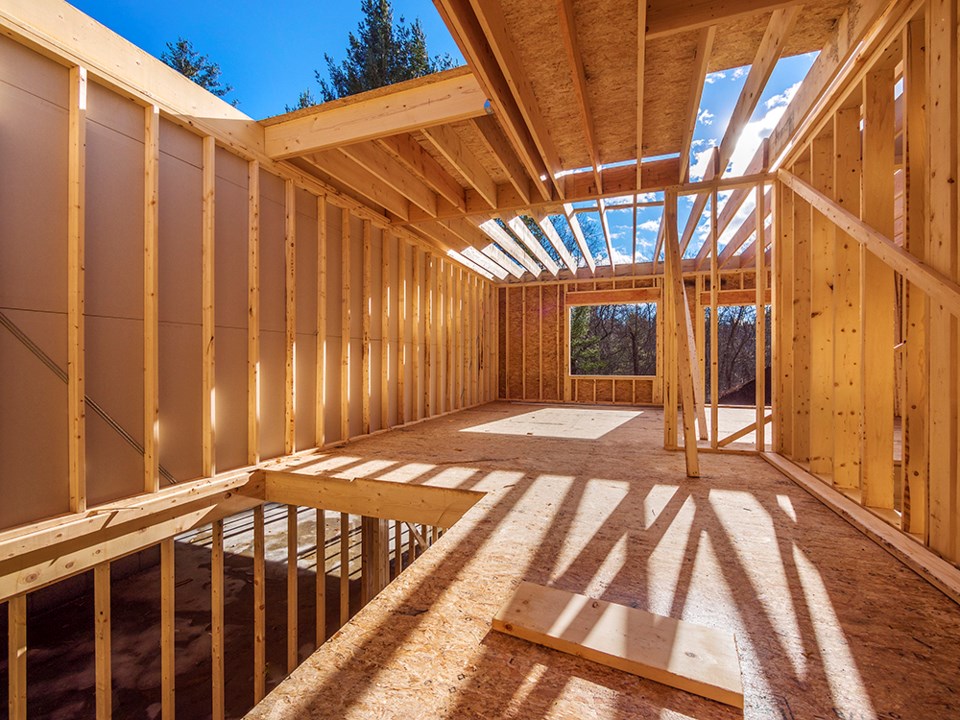Prince George needs 5,218 new housing units by 2026 and 12,503 by 2041, according to an interim housing report that will be presented at the Dec. 2 city council meeting.
The interim report was prepared to fulfill Prince George’s obligations under section 790(3)(b) of BC’s Local Government Act, which requires local government to receive one by Jan. 1, 2025.
It’s a step towards a new full housing report, which the same law mandates the reception of by Dec. 31, 2028.
The city’s last full housing report was issued in 2021 and was updated with 2021 census data in 2022. The interim report is an update of the last full report and projects housing needs over a five-year period from 2021 to 2026 and a 20-year period from 2021 to 2041.
The interim report says that its housing projections were created through Housing Assessment Resource Tools’ BC Housing Needs Report Calculator.
By inputting data into the calculator, municipalities can project what kind of housing supply for certain categories of need
Those categories include those who pay more than 50 per cent of their income towards housing, those experiencing homelessness, households that are not being formed due to economic suppression, the growing number of households, the number of units needed to maintain a three per cent vacancy rate target and units needed to create a buffer beyond the projected needs.
Homes under the first section meet what’s called an “extreme core housing need.”
The interim report says that Prince George needs 306 housing units to meet the needs of those people by 2026 and 1,224 by 2041. This need was projected through data from Canada’s last four censuses as well as the current number of renters in a community.
For those experiencing homelessness, the city needs 498 new permanent housing units by 2026 and 995 new units by 2041.
The housing need for people experiencing homelessness, the report says, is projected through determining their share of the local population and comparing it to the province’s Integrated Data Report.
That report monitors the number of people on income assistance, those who haven’t had a fixed address for three straight months, and those who have stayed in a shelter affiliated by BC Housing for at least one night.
“Suppressed households” are defined as those that would likely form a separate household but live with family members or other adults due to the lack of available or affordable housing.
To address this demand, the interim report says Prince George needs 175 housing units by 2026 and 699 by 2041.
To meet the projected growth in the number of households, the report says Prince George needs 3,652 housing units by 2026 and 7,234 units by 2041. This figure was obtained by taking growth rates for Prince George and the region and applying them to the current population.
To maintain a three per cent vacancy rate, Prince George needs 21 more rental units by 2026 and 85 by 2041. The report says that a vacancy rate between three and five per cent is ideal.
As of October 2023, the Canada Mortgage and Housing Corporation reported Prince George’s vacancy rate was 2.8 per cent. That’s higher than Vancouver (0.9 per cent), Quesnel (2.2 per cent), Williams Lake (0.9 per cent) as well as Kamloops and Kelowna (both at 1.3 per cent).
To establish that demand buffer, Prince George needs 566 units by 2026 and 2,264 by 2041.
In total, the report’s calculations project that Prince George needs 5,218 new units by 2026 and 12,503 by 2041.
This is different from the Housing Target Order given to Prince George by the provincial government effective Aug. 1, 2024. It set a housing target of 1,803 for Prince George over the next five years, which the issuing document states represents 75 per cent of the province’s estimated housing need for the city.
A staff report to council attached to the interim housing report describes the difference between the need identified through that report and the targets set out by the province.
“The HTO is intended to address immediate housing supply needs based on population projections over a specific timeframe (e.g., 2024-2029),” the staff report states.
“In contrast, the Interim HNR takes a longer-term view, assessing housing needs over both five and 20 years. The Interim HNR incorporates a demand buffer to account for market fluctuations, ensuring municipalities can provide diverse housing options, such as homes closer to jobs, larger homes for families, and downsizing options for seniors.
“Additionally, the Interim HNR uses different household projections from earlier periods (e.g., 2021- 2026), which saw higher growth rates due to factors such as immigration ... While both tools share similarities in methodology, the Interim HNR projects higher housing needs due to the demand factor and differing BC Stats household growth assumptions.”
The creation of a new housing needs report also ties into the revision of Prince George’s Official Community Plan.
“Municipalities are required to update their Official Community Plan (OCP) and Zoning Bylaw by Dec. 31, 2025, to incorporate the number of housing units needed to meet the projected 20-year need identified in the Interim HNR,” the staff report states.
Staff’s presentation to council will also go over what the city has done to improve the city’s housing situation since the 2021 report was developed, including the development of the OCP, various zoning changes, setting goals to develop housing near transit infrastructure and providing land for supportive and temporary housing.
The meeting starts at 6 p.m. Monday, Dec. 2 at City Hall.



